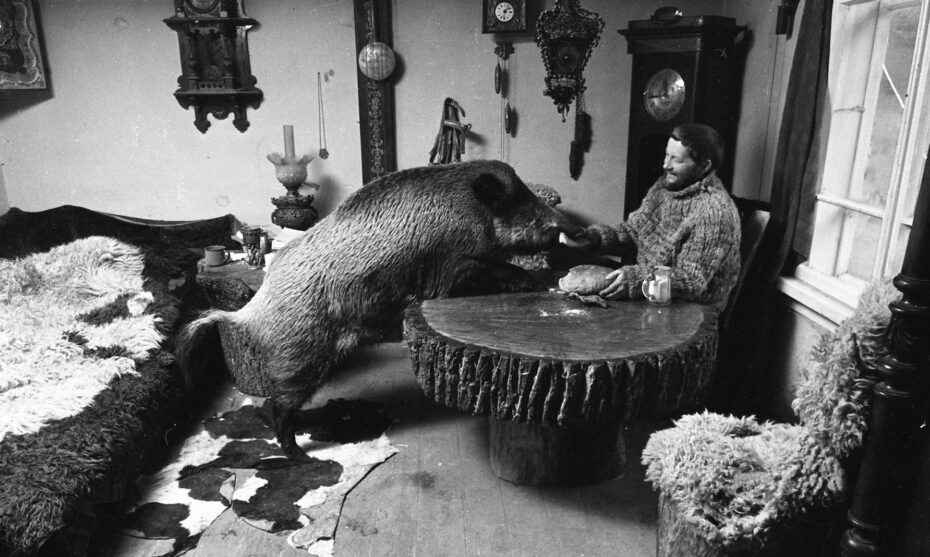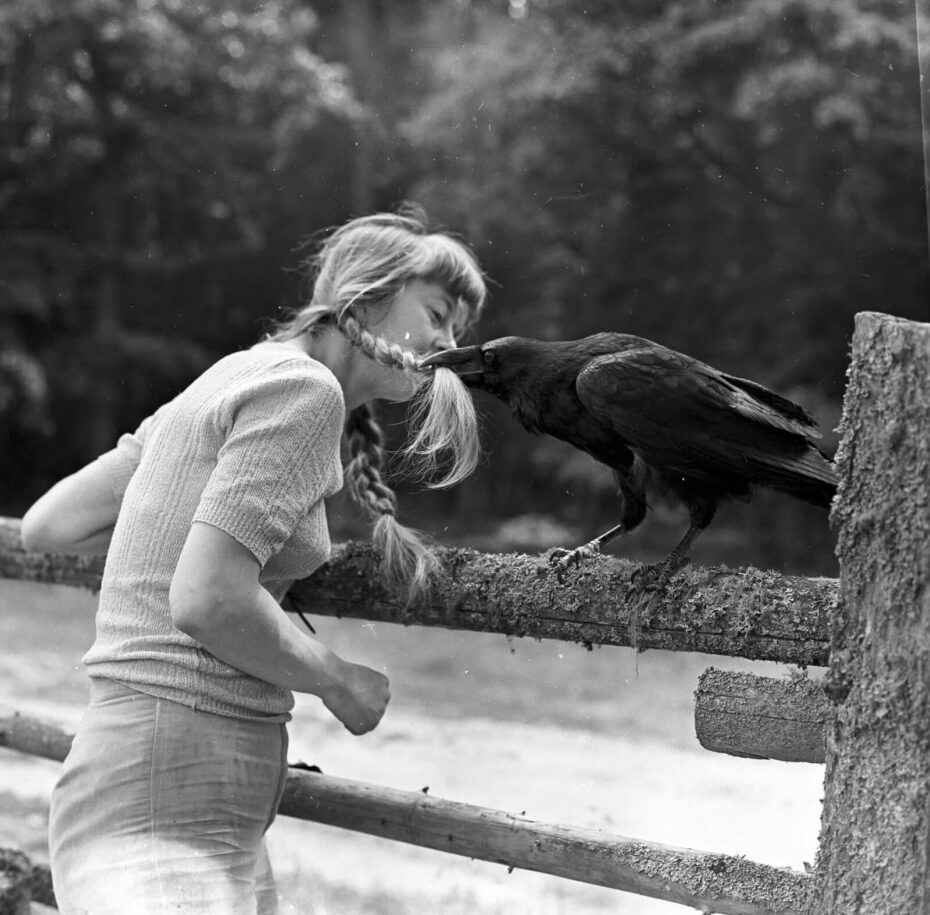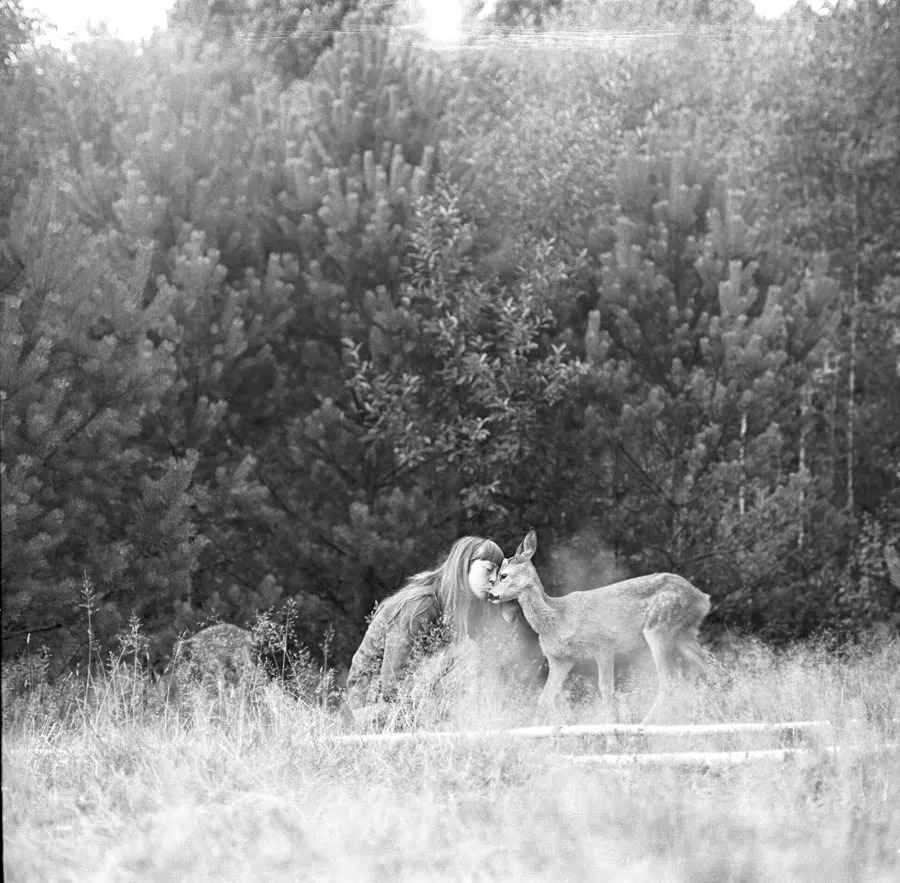Simona Kossak: The Real-Life Snow White With A Passion For The Wild
When we think of Snow White, we often picture a fairy tale filled with adorable creatures and enchanted forests. Yet, in real life, Simona Kossak lived a story that seems straight out of a fantasy.
Her unique companions included a crow notorious for stealing gold and attacking cyclists, a lynx that curled up in her bed, and a tame boar that shared her home.
Though she became a devoted scientist and ecologist, she left behind the conventional academic path to embrace a life deeply immersed in nature. She was also a passionate activist committed to protecting Europe’s oldest forest.
Simona Kossak: more than daughter and granddaughter

Simona Kossak was born in Krakow in 1943. She was seen as the “black sheep” of the famous Kossak family because she wasn’t the son they had hoped for.
She would often say, “When people ask me who I am, my response is: I am a daughter, a granddaughter, and a great-granddaughter.”

The Kossak family was known for its artistic achievements, including famous painters like Juliusz, Wojciech, and Jerzy Kossak, as well as notable aunts such as poet Maria Pawlikowska-Jasnorzewska and satirical writer Magdalena Samozwaniec.

Simona’s choice to become a scientist rather than follow the family’s artistic tradition set her apart and made her an outcast in their eyes. Despite this, she earned a degree in Zoology and animal behavior from Jagiellonian University in 1970.

Her real journey began at the Mammal Research Institute in Białowieża National Park, where she settled at Dziedzinka Lodge, surrounded by ancient wildlife.
The girl with a wild heart

Simona Kossak’s first encounter with Dziedzinka was under the moonlight. She described the magical moment:
“It was the first wisent that I saw in my life – I am not counting the ones in the zoo. Well, and this greeting right at the entry into the forest – this monumental wisent, the whiteness, the snow, the full moon, whitest white everywhere, pretty […] and the little hut hidden in the little clearing all covered with snow.”
The abandoned house, though in disrepair, captivated her. She declared, “it’s finished, it’s here or nowhere else!”

Before moving in, Dziedzinka needed extensive repairs. The Białowieża National Park staff fixed the roof, replaced joists, and treated the building for fungus.
Simona then set about making it her home, decorating it with items from her family’s collection. She brought overclocks, a Turkish dagger, a lace tablecloth, and even a shotgun.

Simona’s transportation methods contrasted sharply with those of her artistic ancestors. While the previous Kossaks traveled by horse, carriage, and later automobiles, Simona used a diverse array of vehicles: a bicycle, a motorbike, a small Fiat, and even cross-country skis.
Tomasz Werkowski, a local hunter, remembered her distinctly: “Once I saw this phenomenon advancing on a komar – wind in the hair, a pilot-cap, rabbit pants, and eye goggles. It passed me by and I had to turn around.”

In winter, Simona often battled the elements, sometimes needing help from friends, like Professor Kajetan Perzowski, who once rescued her and her motorbike from snowdrifts, later enjoying a pot of bigos as thanks.
A unique relationship with wildlife

A few months after Simona Kossak moved into Dziedzinka, a new housemate arrived—Warsaw photographer Lech Wilczek. Initially, they kept their distance, but that changed when Lech brought home a one-day-old wild boar.
The task of raising this boar, whom they named Żabka, brought them closer together, eventually leading to a romantic relationship that would last a lifetime. They lived in the secluded lodge without power or modern amenities.

Simona and Lech shared their home with a growing family of animals. They even slept with the growing boar. Żabka, who began as a tiny boarlet, grew into a massive boar and lived with Simona and Lech for 17 years. This XXL-sized boar behaved more like a loyal dog.
Zbigniew Święch, a Kraków-based journalist, described Żabka: “She stood vigilantly by the leg like a dog, went out on walks, and more and more often she cuddled up to the hosts and demanded to be caressed!”

Simona’s life away from her aristocratic family became a sort of living fairy tale. She surrounded herself with animals, each one known by name.
Among her companions was Korasek, a crow notorious for his thievery. Korasek was known for stealing wallets and permits and even attacking bicyclists, bringing all his loot back to Dziedzinka.

Simona’s friend recalled a time when Korasek swiped a set of car keys: “Lech [Wilczek] said, ‘Don’t worry, he’ll bring them back’… the crow perhaps understood this, because after a moment, he flew up to me, furious, with the keys in his beak and threw them onto a table!”
The animals at Dziedzinka were not just pets but part of Simona’s life and heart. She raised a lynx named Agatka from a cub, and when Agatka passed away, the grief was so profound that Simona and Lech canceled their Christmas plans.

One day, while in the forest, a pack of deer she had raised began barking in alarm and tried to stop her from going further. This scared reaction made Simona realize that the deer was concerned for her safety.
“It meant one thing and one thing only: you are a member of our pack, we don’t want you to get hurt.”

As Simona Kossack and Lech Wilczek’s bond deepened, their menagerie at Dziedzinka expanded significantly.

Their collection included a diverse range of animals: a donkey, a doe, twin moose calves named Pepsi and Cola, a black stork, peacocks, lambs, and even a female lynx cub named Agatka, whom Kossack lovingly called her daughter.

Each animal, whether it was a stray, abandoned, or injured, found a home and care at Dziedzinka.
Simona’s dedication to these creatures earned her a reputation as a forest spirit among locals. They viewed her as a mystical figure, almost like a character from ancient folklore.

She was seen as someone who communicated with the animals, a healer, and a protector of the natural world. Her life and work were deeply intertwined with the forest as a guardian and friend to the wild.
Legacy of the “Snow White” of the wild

Simona Kossack was more than just a guardian of the forest; she was a dedicated environmental activist and ecologist who coined the term “zoo psychologist” to describe her unique approach to animal care and behavior.

Her career was marked by significant academic and professional achievements. She earned her doctorate in 1980 and went on to become a professor of forest sciences.

Her contributions to the field included publishing two books, producing films, and conducting numerous scientific studies.
In recognition of her tireless work, the Polish government honored Kossack with the Golden Cross of Merit in 2000, the highest civilian award in Poland.

Her efforts to protect the country’s last primeval forest were widely acclaimed. By 2003, she was appointed Director of the Department of Natural Forests, a prestigious role she held until her passing in 2007.

Throughout her life, Kossack and her partner, Lech Wilczek, cherished their secluded life at Dziedzinka, finding solace and fulfillment away from the hustle of modern society.

After her death, Wilczek continued to celebrate her legacy, publishing a book titled “Meeting with Simona Kossak” in 2011. In 2022, the documentary film “Simone” further honored her remarkable life and contributions.

